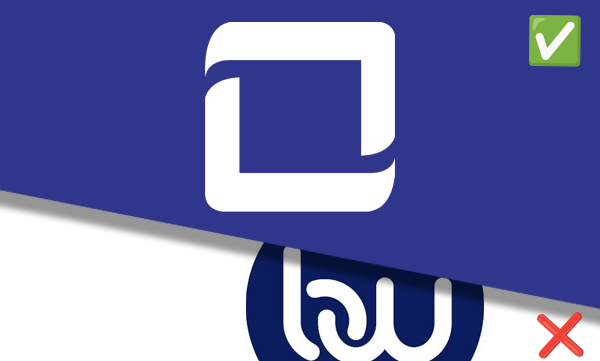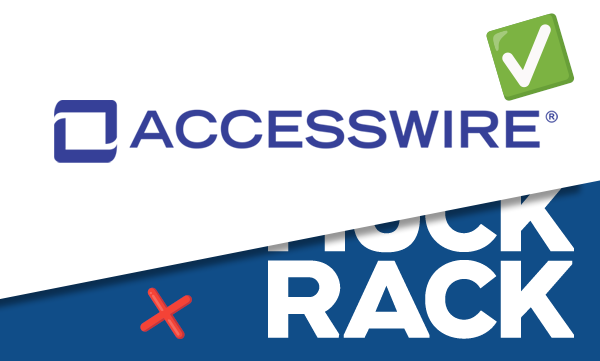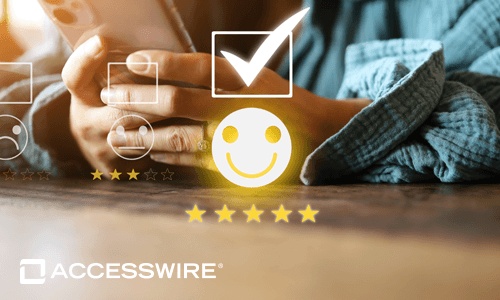What is Reputation Management?
When it comes to a company’s brand reputation, the more positive the better. That said, there are times that a company’s reputation management is challenged – sometimes by truth, sometimes by rumors, and sometimes by letting competitors take control of the narrative.
Reputation management involves monitoring and improving the public opinion of your brand, company, products, services, and/or leadership. Online reputation management is especially important, thanks to the advent of social media.
In this article, you will learn why reputation management is so important to a business, including:
- An example of how quickly a company’s reputation can be damaged
- How positive sentiment and improved customer experience factor into reputation management
- 5 ways to practice reputation management
Reputation Management: A Cautionary Tale
It’s rare to find a business’s reputational damage more disastrous than the 2017 incident that took place on United Airlines Flight 3411 – and even rarer to find a better example of how important reputation management can be to a company.
The legend of Flight 3411 begins on a packed aircraft. The already-seated passengers on the full flight were asked for volunteers to postpone their trip, so that four airline employees could travel on the United Express flight from Chicago’s O’Hare International Airport to Louisville, KY.
Passengers who would agree to give up their seat to accommodate the four airline employees were initially offered $400 in travel vouchers to take a later flight. That offer was doubled when no one stepped forward to accept a ticket on a later flight.]]
Perhaps because it was the last flight of the day between the two cities, but despite the increased amount of the vouchers, no one volunteered for the flight change.
At some point, the on-duty airline employees decided to randomly choose, and if necessary, forcibly remove, four people from the airplane. The airline’s own rules of operational conduct allowed for this action.
Four passengers were involuntarily bumped to a flight that would leave the next day. One of the four, Louisville physician Dr. David Dao, who was 69 at the time, refused to leave his seat. Airport law enforcement and airline employees worked together to remove him.
Dr. Dao, a Vietnamese American, was unseated so violently, he suffered serious injuries, including a broken nose, a concussion that rendered him unconscious, and several teeth that were badly broken. He woke up in the hospital, unable to clearly remember the events that put him there.
Another passenger on the aircraft during Dr. Dao’s removal captured the frightening scene on a cell phone, and the video was shared online. Within minutes, Dr. Dao’s terrible treatment and injuries was the top story on every media outlet’s website, and the opener to televised news broadcasts for days.
There was a secondary incident that further damaged United’s reputation the following day. Oscar Munoz, the CEO of the airline, penned a letter that was emailed to his employees; in the letter, he supported the actions taken during the removal of Dr. Dao the previous day, citing existing protocols that allowed for the physical removal of passengers.
The letter was leaked to the press, making matters even worse for the company. Remarkably, Munoz stayed in his position at United Airlines until 2020. Today, he serves as Executive Chairman of the airline’s Board of Directors. The passenger removal protocols were changed as part of internal and external investigations of the incident that injured Dr. Dao.
Several industry experts familiar with the sealed settlement terms of the lawsuit filed by Dr. Dao against the airline estimate the awarded damages to be in the neighborhood of $140 Million. In all, the incident of Flight 3411 has cost the airline an estimated $1 Billion.
A follow-up article was published by The Washington Post the following year. By that time, United had ended protocols that allowed for the physical removal of passengers, unless a breach of security or safety onboard occurs. “After the United incident, other major airlines made similar pledges. In hearings on Capitol Hill, airline executives said they would stop overbooking flights, and major carriers including American and Delta increased the compensation for passengers who are bumped from their flights,” the Post reported.
Reputation Management, Sentiment, and Improved Customer Experience
The above cautionary tale is useful for explaining how events can quickly spiral out of control. There isn’t a company on Earth that is immune from taking hits to their reputation. If your company doesn’t currently have a reputation management strategy, you should develop one, and implement it as soon as possible. It just takes one negative incident, or accident, or rumor, before a lack of reputational control nose-dives into crisis communications.
Digitally speaking, public relations and marketing professionals can look at algorithms, clickthrough rates, and the results from thousands of A/B test results 24/7/365, but the one element that matters most in online reputation management is the human factor that sentiment creates.
Reputation management involves monitoring and – whenever possible – improving what others think, when it comes to your business. One of the best ways to do that is to create sentiment. One of the easiest ways of creating sentiment about your brand is through enhancing the customer or client experience.
An article in Forbes magazine provides insight on the importance of sentiment analysis. “By using sentiment analysis companies can not only monitor what people say about their brand, but they can deliver what consumers want. Traditional metrics focus on quantity, such as number of views, clicks, comments, shares, etc. Sentiment analysis goes beyond plain demographics to the quality of the interactions between the public and your brand.”
Figuring out what your company does well – and what it lacks, operationally – is key to building that enhanced customer/client experience. Sometimes, negative online reviews can be caused by issues with your products, services, partners, or your people, and should be addressed quickly. Updates to the situation should be forthcoming and always truthful. Identifying and solving these issues quickly and thoroughly can help improve both your company’s reputation and bottom line.
5 Ways to Practice Reputation Management
- Monitor, monitor, monitor. In today’s tech-driven economy, it’s easier than ever for someone to speak negatively about a company, brand, service or product. Few things can dissuade new customers or clients faster than reading negativity about a company or brand.
Think about the last time you ordered something online: Did you look at the number of stars people used to rate what you were buying? Did you read customer reviews before making your purchase? According to ReputationX, 85% of customers rely on online reviews before making important purchases. Additionally, 75% of consumers admit they trust companies with positive reviews, and 60% of consumers say they are influenced by negative reviews when it comes to selecting a business. - Customer retention is easy when they feel valued. Chick-fil-A’s practice of Second Mile Service in their restaurants is a prime example of what quality of customer service looks like. Employees are encouraged to go out of their way to facilitate the best dining experience possible.
Because the customer experience at Chick-fil-A rates as consistently pleasurable, the fast-food chain enjoys some of the highest percentages in customer loyalty in the Quick Service Restaurant industry. When customers feel valued, they tend to return. - Prioritize reputation management as a daily practice. Deloitte released a survey that showed 87% of executives think reputational risk management was more important than other strategic priorities. That said, executives don’t have to be the only ones who worry about reputational risk.
Form a customer satisfaction team and allow them to respond to negative chatter online. Empower the customer satisfaction team to reach out to unhappy customers or clients and try to find a workable resolution to whatever problem has occurred. Putting customers in touch with with a company representative, who can offer to look into a problem or apologize when something goes wrong, can turn a negative experience into a positive one. - Be transparent if something negative happens. There are times when company leaders retreat, rather than face up to negativity, when it comes to their brand. Whether it’s a product default, disappointing quarterly earnings, an executive caught in a scandal, or unfounded rumors that you are dealing with, have your C-Level team get out in front of it.
Using truthful verbiage when acknowledging and/or updating a bad situation is always preferable to hiding, lying, or playing the “blame game.”
Reviewing and rethinking corporate practices that are either outdated or just bad ideas (such as the one that allowed United Airlines employees to have people unnecessarily and forcibly removed from airplanes without their cause or consent). This simple exercise can be performed quarterly or biannually. - Control your company’s narrative. It’s always a good idea to be sharing your business’s stories with customers, stakeholders, shareholders, investors, and the public. One of the most cost-effective ways a business can do this is through press release distribution and earned media.
Having your PR and marketing teams out there sharing and pitching the good news about your company puts you in the driver’s seat, rather than leaving it up to your competitors to tell your story! Additionally, highlighting positive initiatives (such as Diversity, Equity, and Inclusion [DEI] and/or Environmental and Social Responsibility [ESG]) helps keep you top-of-mind in a positive way.
With social media, corporate communicators have an excellent opportunity to connect with audiences who are interested in what a company does, or the products it provides. Hiring someone to work on social media exclusively is a great way to keep the conversations about your business going.
Tracking your company or its products via search engine alerts and on customer/employee review websites like Yelp , G2, and Glassdoor, can help you respond to, and possibly stave off, serious problems to your brand’s reputation.
And speaking of reviews, your customers or clients can act as the human equivalent of your best billboards, so provide them a forum to say nice things. Make sure your website has a Customer Reviews page.
Getting Started
Ready to start managing your company’s reputation? There’s no time like the present. As mentioned earlier, press release distribution is a fantastic way to promote your brand, people, and/or good works to the audiences you should be in front of. Reach out to ACCESSWIRE to learn more, or to schedule a demo of our platform – simply click here to connect!
Similar Blog Posts



PRODUCTS
ACCESSWIRE | All Rights Reserved

